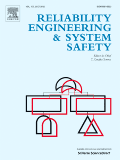
RELIABILITY ENGINEERING & SYSTEM SAFETY
Scope & Guideline
Pioneering Research in Engineering Excellence.
Introduction
Aims and Scopes
- Reliability Modeling and Analysis:
Research in this area focuses on developing models to assess the reliability of systems, including both static and dynamic models. This encompasses methodologies for analyzing systems with various failure modes and dependencies. - Risk Assessment and Management:
This scope includes methodologies for evaluating risks associated with system failures, including probabilistic risk assessment, Bayesian networks, and risk management strategies for complex infrastructures. - Condition-Based Maintenance and Prognostics:
The journal emphasizes condition-based maintenance strategies that leverage real-time data and predictive analytics to optimize maintenance schedules and improve system reliability. - Safety and Resilience Engineering:
Research on enhancing the safety and resilience of systems, particularly under extreme conditions or hazards, is a key focus. This includes studies on cascading failures and the resilience of critical infrastructures. - Data-Driven Approaches in Reliability Engineering:
The integration of machine learning, data analytics, and artificial intelligence in reliability engineering practices is increasingly emphasized, particularly in predictive maintenance and fault diagnosis. - Systems Engineering and Design Optimization:
This area covers methodologies for the design and optimization of reliable systems, including redundancy allocation, system architecture design, and performance-based design approaches. - Human Factors and Organizational Reliability:
Research on the role of human factors in system reliability, including human reliability analysis and the impact of organizational practices on system performance.
Trending and Emerging
- Machine Learning and AI in Reliability Engineering:
There is a growing trend towards using machine learning and artificial intelligence for predictive maintenance, fault diagnosis, and reliability modeling, enabling more adaptive and efficient systems. - Resilience Engineering in Critical Infrastructure:
Research focusing on the resilience of critical infrastructures, particularly in the context of natural disasters and cyber-physical threats, is increasingly prominent, emphasizing the need for robust and adaptive systems. - Data Fusion and Multimodal Approaches:
The integration of multiple data sources and modalities for improved reliability assessments and predictive maintenance strategies is gaining traction, reflecting the complexity of modern systems. - Dynamic and Adaptive Maintenance Strategies:
Emerging methodologies for adaptive maintenance that respond to real-time system conditions and performance metrics are becoming a focal point, particularly in manufacturing and utility sectors. - Human Factors in System Reliability:
There is an increased emphasis on understanding the impact of human factors and organizational behavior on system reliability, leading to more comprehensive human reliability analysis methodologies. - Uncertainty Quantification and Risk Management:
Research into advanced uncertainty quantification techniques and their application in risk management is growing, addressing the need for more robust decision-making frameworks in reliability engineering.
Declining or Waning
- Traditional Reliability Testing Methods:
Traditional reliability testing methodologies, such as accelerated life testing, may be waning as newer data-driven and AI-based approaches gain traction, offering more efficient and accurate assessments. - Generalized Risk Assessment without Data Integration:
There appears to be a decline in research focused on generalized risk assessment models that do not incorporate data-driven insights, as the field increasingly favors models that integrate real-time data and predictive analytics. - Static Risk Models:
The reliance on static risk models is diminishing, with an increasing preference for dynamic models that account for changing conditions and interdependencies among system components. - Homogeneous System Reliability Models:
Research on homogeneous models, which assume uniformity in system components, is decreasing, as more complex systems with heterogeneous components are becoming the focus of reliability studies.
Similar Journals
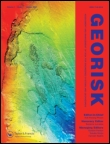
Georisk-Assessment and Management of Risk for Engineered Systems and Geohazards
Empowering Informed Decisions in Geohazard ManagementGeorisk - Assessment and Management of Risk for Engineered Systems and Geohazards is a premier journal published by Taylor & Francis Ltd, focusing on the interdisciplinary fields of building and construction, civil and structural engineering, geology, and geotechnical engineering. With a commendable impact within the scholarly community, it holds a distinguished Q1 ranking across multiple categories, reflecting its relevance and quality. The journal addresses critical issues related to risk assessment and management, especially concerning engineered systems and geohazards, making it an invaluable resource for researchers, professionals, and students dedicated to safety, risk, reliability, and quality. Operating under rigorous peer-review standards, it offers insights and innovative methodologies that empower stakeholders in making informed decisions. The journal is accessible via subscription, providing a wealth of knowledge from 2007 to 2024. Engaging with Georisk ensures that readers remain at the forefront of research and practical solutions in managing risks associated with complex engineering challenges and geological threats.
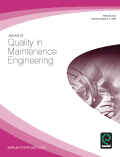
Journal of Quality in Maintenance Engineering
Championing Quality and Reliability in EngineeringJournal of Quality in Maintenance Engineering, published by EMERALD GROUP PUBLISHING LTD, is a leading academic journal in the fields of Industrial and Manufacturing Engineering, Safety, Risk, Reliability and Quality, and Strategy and Management. With an ISSN of 1355-2511 and an E-ISSN of 1758-7832, this quarterly publication has been a vital resource for professionals and researchers alike since its inception in 1995. As of 2023, the journal has achieved a commendable Q2 ranking across multiple categories, showcasing its robust influence in advancing knowledge and practices in maintenance engineering. Although not an open-access journal, it offers various access options to facilitate research dissemination. With a focus on quality improvement and sustainable practices in maintenance strategies, the journal seeks to bridge the gap between theoretical research and real-world applications, making it an essential read for anyone invested in enhancing maintenance engineering practices.
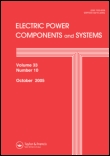
ELECTRIC POWER COMPONENTS AND SYSTEMS
Transforming Energy Engineering Through Research and CollaborationELECTRIC POWER COMPONENTS AND SYSTEMS is a respected peer-reviewed journal dedicated to advancing the field of electrical and electronic engineering, energy engineering, and power technology. Published by Taylor & Francis Inc, this journal boasts a dynamic scope that encompasses a wide array of topics relevant to power systems, including renewable energy, power distribution, and component reliability. With an impact factor indicative of its ongoing contribution to research, it ranks in the Q3 category across multiple engineering disciplines according to the latest metrics. Researchers and professionals will find this journal an invaluable resource, offering insights into the latest developments and innovations in electric power systems from its inception in 2000 to the current era and beyond. Accessible online with Open Access options, it caters to both established experts and emerging scholars looking to deepen their knowledge and foster collaboration within this critical field.

Bridge Structures
Exploring New Horizons in Bridge Systems ResearchBridge Structures is an esteemed academic journal dedicated to the field of structural engineering, particularly focusing on the design, analysis, and maintenance of bridge systems. Published by IOS PRESS, a reputable publisher known for its contributions to various scientific fields, the journal serves as an integral platform for disseminating innovative research and advancements within the domain. With an ISSN of 1573-2487 and an E-ISSN of 1744-8999, Bridge Structures has established itself over the years—covering contributions from 2005 to 2024. The journal has attained a commendable ranking within the Q3 category in Building and Construction and holds a position within the 28th percentile among its peers according to the Scopus rankings. Though the journal operates on a subscription basis, its commitment to advancing engineering knowledge is paramount, making it essential reading for researchers, practitioners, and students eager to deepen their understanding of bridge engineering. The journal not only explores theoretical advancements but also emphasizes practical applications, providing a well-rounded perspective on current challenges and solutions in the field of bridge structures.
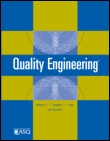
Quality Engineering
Advancing excellence in quality assurance and engineering.Quality Engineering, published by Taylor & Francis Inc, is a leading journal in the field of Industrial and Manufacturing Engineering and Safety, Risk, Reliability, and Quality. With a focus on the advancement of quality assurance and management practices, this journal has been a valuable resource since its inception, featuring research that spans from 1970 to the present day. The journal holds a commendable placement in the 2023 category quartiles, ranked Q2 in both relevant fields, highlighting its significance in contributing to innovative methodologies and solutions in quality engineering. Although currently not an open access publication, it continues to attract a wide array of contributions from researchers, professionals, and students dedicated to enhancing quality in engineering processes. With a Scopus rank reflecting its solid standing—75th percentile in Safety, Risk, Reliability and Quality and 62nd percentile in Industrial and Manufacturing Engineering—Quality Engineering remains an essential platform for disseminating knowledge that fosters excellence in the engineering domain.
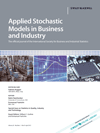
APPLIED STOCHASTIC MODELS IN BUSINESS AND INDUSTRY
Transforming Decision-Making with Advanced Stochastic TechniquesApplied Stochastic Models in Business and Industry, published by Wiley, is a preeminent journal dedicated to advancing the field of stochastic modeling in various business and industry contexts. With an ISSN of 1524-1904 and an E-ISSN of 1526-4025, this journal serves as a vital platform for researchers and practitioners aiming to leverage stochastic techniques to address complex decision-making and operational challenges. The journal holds prestigious rankings, including Q2 in Business, Management and Accounting, and has converged years spanning from 1999 to 2024. It is distinguished by its wide scope, focusing on all aspects of modeling and simulation, as well as decision sciences and operations research. Although it does not operate as an open-access journal, its significant impact factor and Scopus rankings ensure that the valuable insights published within reach a broad audience. By fostering high-quality research and discourse, Applied Stochastic Models in Business and Industry plays a crucial role in driving innovation and excellence in its fields.
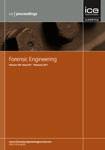
Proceedings of the Institution of Civil Engineers-Forensic Engineering
Pioneering Research for Safer Civil Engineering PracticesProceedings of the Institution of Civil Engineers - Forensic Engineering is a pivotal journal in the field of forensic engineering, published by Emerald Group Publishing Ltd, a renowned name in academic publishing. With a focus on investigating and understanding the failures of civil engineering structures, this journal provides a critical platform for the dissemination of research and case studies aimed at enhancing safety, risk, and reliability in engineering practices. It holds an important place in the Q4 quartile of the Safety, Risk, Reliability and Quality category as of 2023, and currently ranks #123 out of 207 in its field according to Scopus, reflecting its emerging influence despite its relatively recent establishment in 2011. Researchers, practitioners, and students alike will find valuable insights through non-open access articles that contribute to a deeper understanding of forensic analysis in civil engineering contexts. The journal's mission is to promote discussions that lead to significant advancements in civil engineering safety and reliability, ultimately informing best practices and policy-making in the profession.

Proceedings of the Institution of Mechanical Engineers Part O-Journal of Risk and Reliability
Fostering a Culture of Safety through Scholarly Discourse.Proceedings of the Institution of Mechanical Engineers Part O – Journal of Risk and Reliability is a highly regarded journal published by SAGE Publications Ltd, specializing in the critical fields of Safety, Risk, Reliability, and Quality. Established in 2006 and extending its coverage until 2024, this journal serves as a vital platform for researchers and professionals to disseminate innovative findings and discuss emerging trends and methodologies related to risk assessment and reliability engineering. With an impact factor that places it in the Q2 quartile of its category and ranked 69th out of 207 in Scopus, it has garnered significant attention within the academic community, ensuring robust visibility and influence. Readers can expect rigorous peer-reviewed articles that contribute to advancing knowledge and practices in the field, fostering a deeper understanding of the complexities and integral practices essential for safety and reliability. As a leading publication within the United Kingdom, it continues to play an instrumental role in shaping contemporary discussions and research in this vital sector.
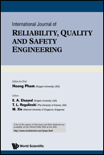
International Journal of Reliability Quality and Safety Engineering
Advancing Excellence in Reliability and Safety EngineeringThe International Journal of Reliability Quality and Safety Engineering, published by World Scientific Publishing Co Pte Ltd, is a leading platform for disseminating cutting-edge research in the fields of reliability, quality, and safety engineering. With an impressive scope that spans across aerospace, electrical engineering, nuclear energy, and industrial manufacturing, this journal serves as a critical resource for researchers and professionals aiming to enhance system dependability and operational excellence. Indexed in Scopus, it holds a respectable Q3 ranking across various categories in 2023, reflecting its growing influence in the academic community. Although currently not open access, it provides ample opportunities for scholars to publish impactful studies from its extensive database, which has evolved since 1996. The journal's commitment to advancing knowledge in reliability and safety engineering makes it a pivotal resource for those dedicated to improving engineering practices and protocols worldwide.

Eksploatacja i Niezawodnosc-Maintenance and Reliability
Connecting research and practice in manufacturing engineering.Eksploatacja i Niezawodnosc-Maintenance and Reliability, published by the POLISH MAINTENANCE SOC, stands as a premier Open Access journal dedicated to the fields of industrial and manufacturing engineering as well as safety, risk, reliability, and quality. With its ISSN 1507-2711, the journal has been a pivotal resource since 2004, fostering knowledge dissemination and innovation within the engineering community. The journal boasts an impressive standing, reflected in its Q2 Quartile ranking in both relevant categories for 2023, and Scopus ranks indicating its significant impact in the domains it covers; specifically, it is positioned at the 50th rank in Safety, Risk, Reliability and Quality and 97th in Industrial and Manufacturing Engineering. Researchers and professionals exploring the intricacies and advancements in maintenance and reliability will find an array of pertinent studies, insights, and methodologies within its publications. Embracing an open access model, this journal not only enhances visibility and accessibility of research but also supports the vital exchange of ideas in the global engineering landscape.